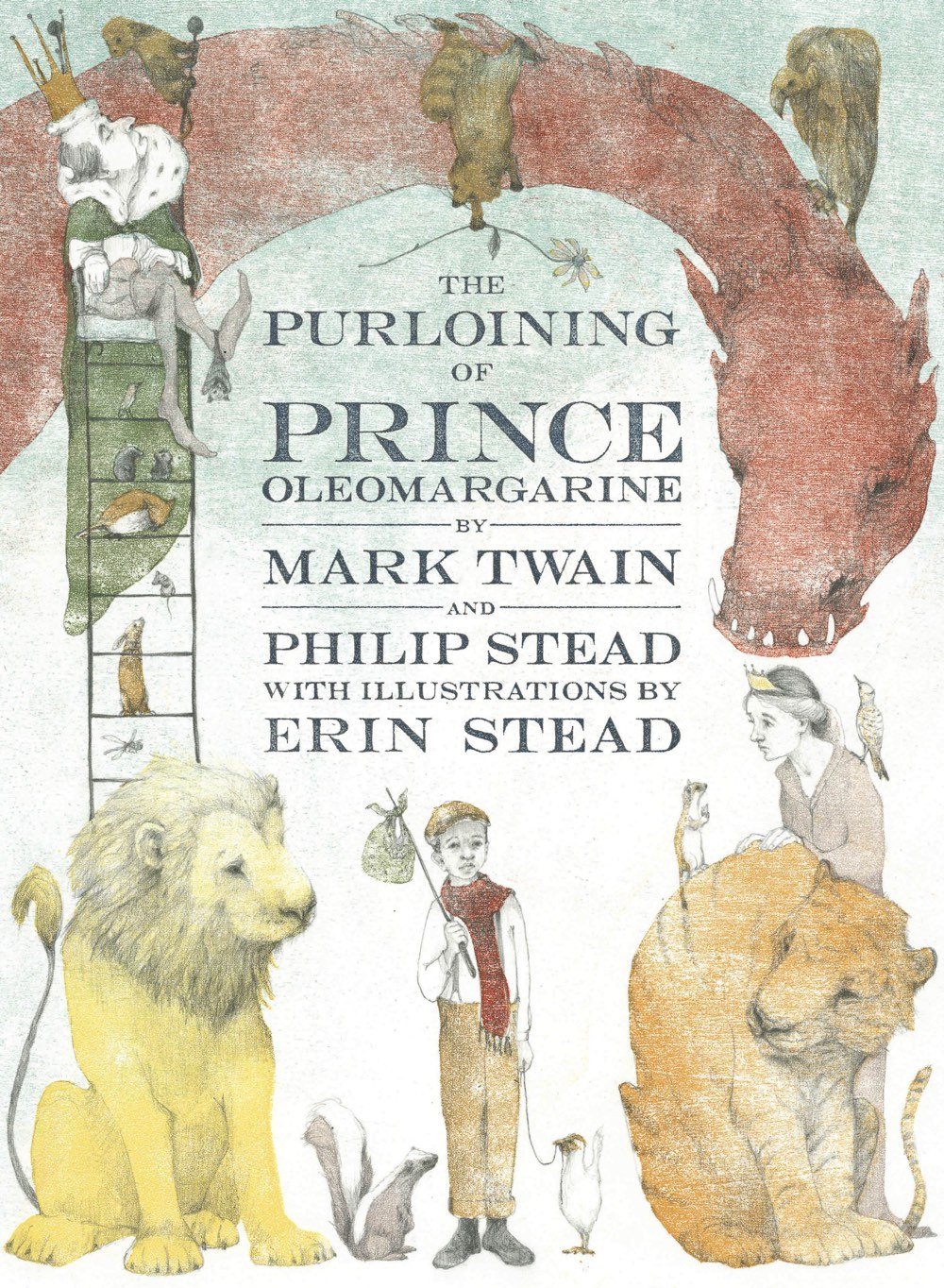The Purloining of Prince Oleomargarine, a previously unpublished children’s book by Mark Twain

To Mark Twain’s posthumously published works, add one more: a book for children called The Purloining of Prince Oleomargarine. Twain jotted down notes for the book — which was discovered a few years ago in the Twain literary archive — but never finished the story. Doubleday bought the rights and worked with Philip and Erin Stead (an author and illustrator, respectively) to complete the story and turn it into a book.
In a hotel in Paris one evening in 1879, Mark Twain sat with his young daughters, who begged their father for a story. Twain began telling them the tale of Johnny, a poor boy in possession of some magical seeds. Later, Twain would jot down some rough notes about the story, but the tale was left unfinished…until now.
Plucked from the Mark Twain archive at the University of California at Berkeley, Twain’s notes now form the foundation of a fairy tale picked up over a century later. With only Twain’s fragmentary script and a story that stops partway as his guide, author Philip Stead has written a tale that imagines what might have been if Twain had fully realized this work.
The Steads introduced several changes to the story, including making the book’s hero black. This New Yorker piece by Mythili Rao explores how much artistic license should be taken with a story that ultimately has Twain’s name on it.
“I was surprised by that,” Bird told me, when I asked him about the Steads’ interpretation of the character. “I just didn’t see the textual evidence for it. If Mark Twain wanted to make somebody black, he would make them black. He was not shy about dealing with matters of race.” When Twain told his daughters bedtime stories, he often incorporated household objects or magazine illustrations in the narrative. In his journals, he wrote, “The tough part of it was that every detail of the story had to be brand-new — invented on the spot — and it must fit the picture.” (Susy, in particular, was an “alert critic.”) The journals suggest that Johnny, a recurring character in Twain’s bedtime stories, was based on a rather clinical William Page illustration of the male figure that the Clemens daughters spotted in an April, 1879, issue of Scribner’s Monthly magazine. It seems likely that neither Twain nor his daughters imagined Johnny as the Steads do.





Stay Connected